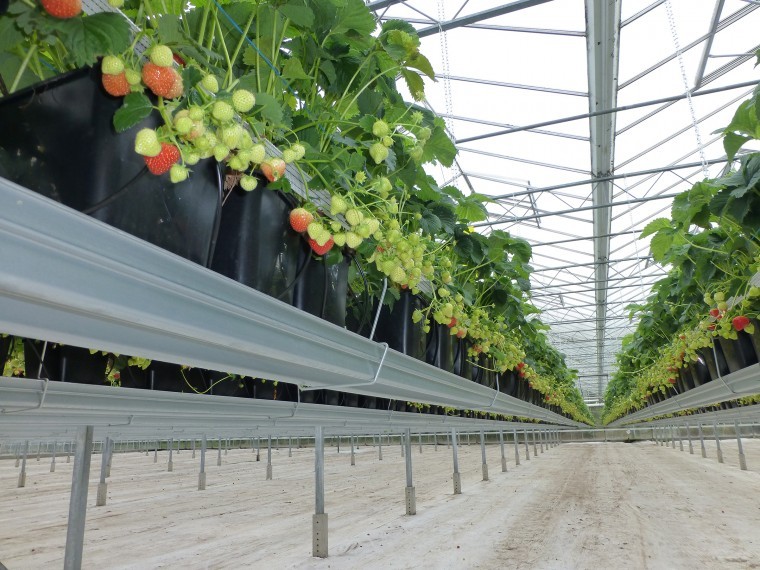By 2020, it is expected that, like spray irrigators, they will have to use abstraction licences if they want to continue using the trickle irrigation which is essential for their crops.
Now new research funded by the Environment Agency (EA) and the European Union has shown that by a combination of water use efficiency, building new reservoirs and finding new supplies, growers can mange their irrigation and still produce healthy crops.
Based at East Malling Research in Kent, the WATERR project has just presented its main findings to a seminar. “The EA is concerned about the status of rivers in the South East and nationally,” said Paul Dracott, the WATERR project manager.
“Irrigators abstract directly from rivers or bore holes above aquifers, taking 85% of their needs from those sources. The EA already classifies many river catchments as over licensed or over abstracted. As a result the EA often applies “hands off flows” periods for irrigators, especially in the summer. So any solution to this is a balance between protecting the environment and ensuring growers can still produce crops.”
The WATERR project ran 110 irrigation business reviews representing 25% of South East irrigators but 60% of irrigation volumes. The growers covered 6,300 hectares, and 57% used mainly spray irrigation on potatoes, field vegetables and salad crops and 43% typically used trickle irrigation mainly for soft and tree fruit. Most of the growers (53) came from Kent who accounted for 75% of the production hectarage of soft fruit and 90% of the tree fruit.
Analysing the results, the most surprising finding was that substrate grown crops – which use efficient trickle irrigation techniques – topped the average water use by crops in the three project years 2011, 2012 and 2013. Substrate strawberries used 2,495 cubic metres of water per hectare and substrate raspberries used 1,509 cubic meters of water per hectare. By contrast, potatoes – which mainly use rain guns and spray irrigation – used 886 cubic metres.
The other extraordinary finding was that in Kent in the seven years since 2008, water use in trickle irrigation – which is unlicensed – has increased from about one million cubic metres to two million cubic metres, while spray irrigation volumes have stayed roughly the same. “As a result, the whole irrigation sector in Kent has grown by about a third,” said Mr Dracott.
This growth reflects both an extended growing period as well as a significant shift towards intensive polytunnel production. In addition, trickle irrigated crops are totally dependent on irrigation water, whereas field crops also use rainfall.
The project found that irrigation has a big impact on growers’ profitability as well as contributing to higher yields. Irrigation also gives significant improvements in produce quality and higher selling prices. In addition to the financial benefits, more than 40% of growers said that improving water use efficiency is also the best way of improving water availability and security.
To achieve this, the project found that irrigation scheduling – in particular taking account of soil moisture levels – is critical to achieving optimal irrigation performance and use efficiency. Many growers are increasingly using soil moisture probes and other scientific tools for their water use timing and duration. “As one grower said, it’s about getting the right amount of water to where it’s required at the right time,” Mr Dracott added.




